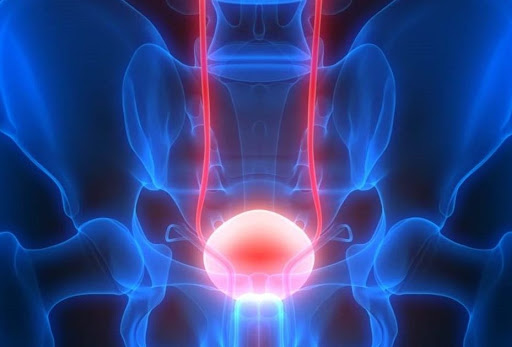About Treatment
Bladder cancer, or a malignant tumor of the bladder, is the second most common tumor of the genitourinary system, more than 80% of cases occur in patients older than 50 years, in men 3-4 times more often. According to world statistics, the frequency of this disease is increasing.
Bladder cancer metastasis most often occurs in regional lymph nodes, distant metastases are rare.
Bladder tumor: Symptoms
The symptomatology of a bladder tumor consists mainly of hematuria (the presence of blood in the urine) and dysuria (urination disorders). A bladder tumor in men, as well as a bladder tumor in women, can also occur as follows:
hematuria can have different intensities - from a barely noticeable increase in the number of red blood cells in the analysis of urine (microhematuria) to intense bleeding;
frequent urination, sometimes painful;
pain in the lower abdomen - can be dull and permanent, pain in the kidney can occur as a result of compression of the mouth of the ureter and impaired outflow of urine, as well as radiating to the genitals, perineum.
Bladder Tumor: Diagnosis
Ultrasound, MRI, computed tomography, cystoscopy, during which a tumor biopsy can be performed and pathomorphological and immunohistochemical examinations are carried out, in the results of which treatment methods are decided.
Bladder tumor: Treatment
The choice of treatment methods and surgical intervention depends on the degree of spread of the tumor process. In the case of timely treatment of patient and the locally advanced process, surgery may be limited to endoscopic surgery - transurethral resection (TUR) of the bladder - removal of the neoplasm through the urethra. With a disease such as a bladder tumor, surgery is a necessary therapeutic measure.
In the later stages, bladder removal (cystectomy) should be performed. Despite the fact that in these cases the operation is radical in nature and simultaneously with cystectomy in a number of clinical cases the lymph nodes and pelvic organs (prostate in men, uterus and ovaries in women) can be removed, preference is given to minimally invasive, laparoscopic interventions, including simultaneous plastic bladder, to maintain good quality of life. This minimizes the length of hospital stay and speeds up recovery.
-
Complications
Bleeding that may require a blood transfusion or reoperation;
Damage to the wall of the bladder or any organ of the abdominal cavity, which makes it necessary to immediately perform an open operation;
Urinary infection (acute pyelonephritis, acute prostatitis, acute orchiepididymitis, sepsis);
The formation of further stricture (narrowing) of the urethra;
Relapse of a bladder tumor. -
Stages of Bladder Cancer
T-1 - a small tumor on the surface layer of the bladder wall without spreading deeper.
T-2 - tumor growth on the middle (muscle) layer of the bladder wall without spreading outside the organ.
T-3 - tumor invasion beyond the wall of the bladder.
T-4 - tumor invasion into neighboring organs and tissues, the presence of metastases. -
Main Treatment Methods
Transurethral resection of the bladder (TUR)
Cystectomy
Laparoscopic surgery
Contact with carcinogenic chemicals. Such substances include arsenic, petroleum products, as well as chemicals that are used in the manufacture of dyes, rubber, leather, textiles;
Chronic infections, chronic inflammatory processes of the genitourinary system (chronic cystitis, stones in the bladder);
Smoking. Cigarette smoke contains a large number of toxic chemicals that can cause cancer, that is, they are carcinogens. Absorbed in the lungs, such substances enter the bloodstream, are filtered out in the kidneys and end up in the urine. Then they come in contact with the mucous membrane of the bladder and cause changes in them that can turn into malignant;
Untimely and irregular emptying of the bladder;
Genetic Factor (bladder cancer in immediate families);
Age. With age, the risk of developing bladder cancer increases.
The following symptoms are characteristic of malignant neoplasm of the bladder:
Blood in the urine (hematuria) is the most common symptom of the disease, the first complaint in 90% of cases. Often hematuria is episodic in nature or even occurs once, and it can also disappear without treatment. However, if measures are not taken to clarify the nature and causes of hematuria, as well as without timely treatment, the disease will continue to develop;
Rapid and / or painful urination;
Pain in the perineum, in the sacrum;
Weakness, fatigue with minor physical exertion, causeless weight loss, bone pain (indicate the prevalence of the process).
Ultrasound of the abdominal cavity, pelvis and retroperitoneal area;
Urography is performed using a special X-ray technique and intravenous administration of contrast;
Computed Tomography (CT) of the organs of the chest, abdominal cavity, retroperitoneal area and small pelvis with intravenous contrast;
Transurethral resection of the bladder (TUR of the bladder). Using a special technique, an examination of the bladder and urinary tract is performed; if necessary, taking a small fragment of the tumor / neoplasm / polyp for biopsy;
General, biochemical (ALT, AST, total / direct bilirubin, creatinine, LDH, urea, total protein) blood tests, coagulation, urinalysis;
When planning surgical treatment, blood tests for hepatitis B and C are mandatory, as well as a test for syphilis;
Blood type, Rh factor;
Ultrasound of the heart (echo cardioscopy);
Electrocardiogram.
Surgical. The type of operation depends on the prevalence of the tumor, its location in the bladder, as well as the size;
Transurethral resection of the bladder (TUR of the bladder) is performed in the first stages of the disease (stage I, II). Instruments are inserted through the urethra and urethra into the bladder, after which the tumor is removed within the healthy tissue;
Resection of the bladder (removal of part of the bladder) can be performed if the tumor is limited to one area of the bladder that can be removed without causing damage to the functions of the bladder;
Radical cystectomy - removal of the bladder with lymph nodes and, if necessary, nearby organs. After this operation, there are several ways to remove urine: the creation of an artificial bladder (the natural urethra is saved) or the removal of the ureters on the skin (an external plastic container is used as an urinal);
Chemotherapeutic. When conducting chemotherapy, patient is administered antitumor drugs that have destructive and inhibitory effect on cancer cells;
In the first stages of the disease, intravesical chemotherapy is possible (drugs are injected into the bladder through a tube inserted into the urethra). The number of injections depends on the stage of the disease and prognosis.
Postoperative chemotherapy (neoadjuvant). It is carried out in order to reduce the size of the tumor and reduce the volume of surgical treatment. After preoperative chemotherapy, the effectiveness of the operation increases, and the possibility of relapse decreases; Adjuvant chemotherapy is aimed at cancer cells that were not removed during surgery, and is also carried out to prevent the relapse of the tumor;
Symptomatic chemotherapy (palliative). It is performed in cases of widespread inoperable bladder cancer in order to reduce the size of the tumor, slow its growth or alleviate symptoms.
Radiation treatment is used after surgery to prevent possible relapses. It can also be used in combination with chemotherapy or as symptomatic therapy if other treatment methods cannot be used;
Immunotherapy. Immunotherapeutic drugs are injected through the urethra directly into the bladder (intravesical therapy) or intravenously;
Combination treatment involves the use of several different methods of influencing the tumor. Surgical treatment + chemotherapy, surgical treatment + radiation therapy.











